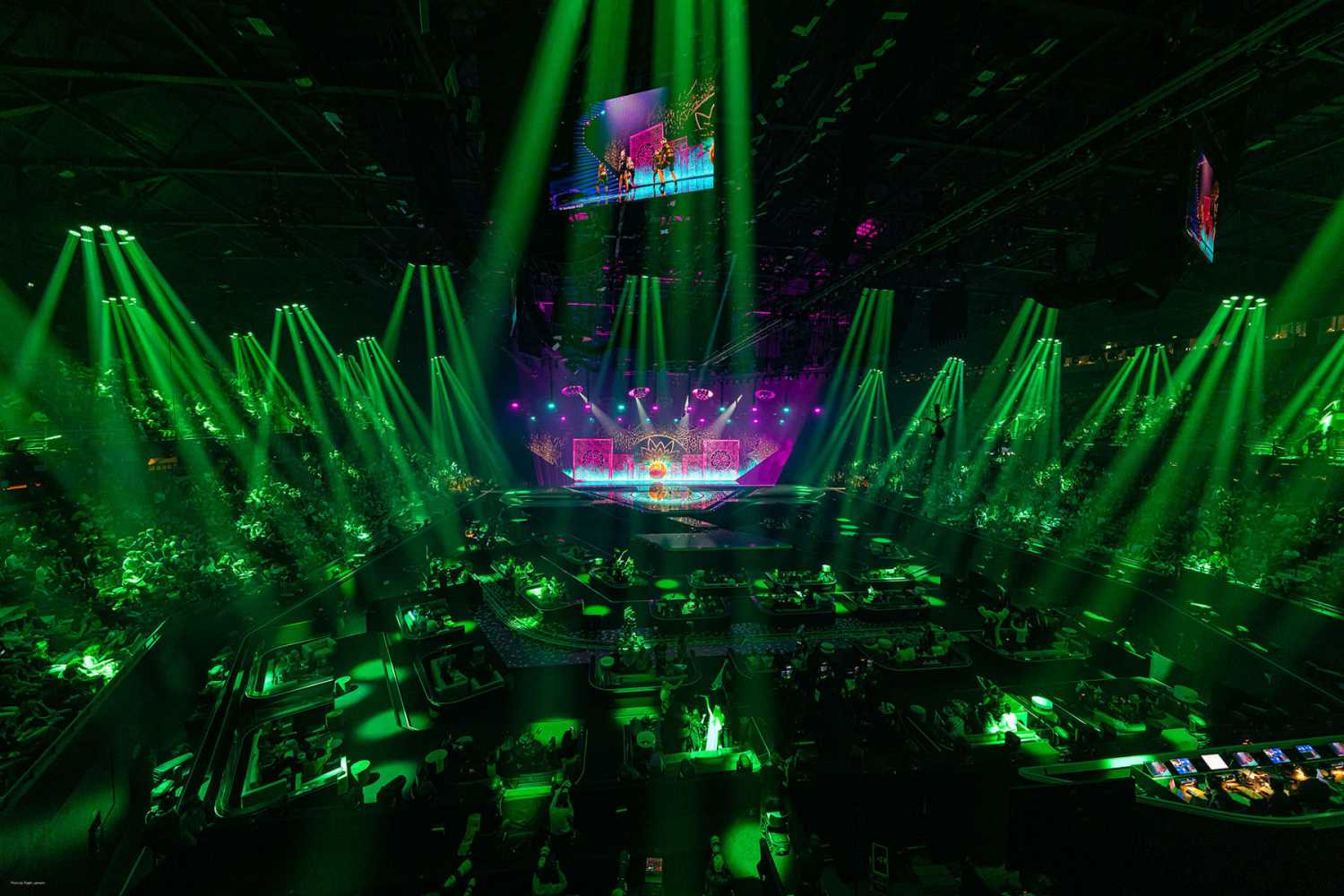Robe plays major role in Eurovision lighting
- Details

Henk-Jan specified 740 x Robe moving lights for the event, which made up over a third of the total lighting rig which came in at a count of 1,782 active fixtures.
These and all the event’s lighting equipment – plus audio and rigging – was delivered by ESC 2021’s official technical supplier for lighting, audio and rigging, leading Netherlands rental specialist, Ampco Flashlight.
Ampco Flashlight’s operational & commercial director Dennis van der Haagen explained that the company was chosen following an official European tender process to supply – uniquely – three areas of the production. “To realise everyone’s expectations, we combined our experience as the lighting and rigging supplier in Portugal 2018, with our extensive audio track record for live music and broadcast crossover events.”
The Robe fixture break-down was 396 x Spiiders, 220 x LEDBeam 150s, 92 x BMFL WashBeams, 25 x Tetra2 moving LED bars, with 12x BMFL Spots operated via 12 x Robe’s RoboSpot remote controlled follow spotting systems.
Florien Wieder’s impressive modernist set design, with its striking main upstage blow-through LED screen and mercurial looking video floor, was an overall ‘bigger picture’ starting point for Henk-Jan in developing the lighting.
The 396 Robe Spiider LED wash beams were divided over 44 pods in the roof, with nine Spiiders per ‘flower pod’ flown throughout the venue and used as “big wash lights” – almost like a giant Svoboda effect. Fourteen of these pods were on the automation system and directly above the Main stage.
The 220 x LEDBeam 150s were used around the Main and B-stage screens, and as outward fanning floor lights for both stages.
Twenty Five Robe Tetra2s were inbuilt into the set floor, just in front of the Main stage video screen and used for whizzy effects that looked great on the sweeping wide shots.
After much deliberation, a covid-tested, socially distanced, limited capacity and hugely enthusiastic audience of 3,500 people were allowed into the three televised events, where they made enough noise for a stadium of 100,000, ramping up the excitement, anticipation, and atmosphere for everyone involved!
The public were located seats in the first tier of side bleacher seating, while the Green Room – which is often in another room or part of the venue completely – was moved to the arena floor, with all artists and delegations also effectively becoming audience. a layout which worked well both visually and practically.
To light this vast area, the initial plans (from 2020) were re-worked and the 92 x BMFL WashBeams plus the BMFL FollowSpots (Long Throws) were added to the overhead trusses to be utilised for front, audience and green room lights for the entire space.
This ensured that all the green room close up shots, action and emotional moments as the scores came in … were captured and cleanly lit for camera.
Fourteen Robe RoboSpot remote follow spot controllers were part of the overall remote follow spot system design. Twelve – a mixture of BMFL WashBeams and BMFL FollowSpots were running in multi-device mode with MotionCams and two BMFL FollowSpots, used as front stage key lights.
RoboSpot systems were picked for their accuracy, and the BMFL WashBeam and BMFL FollowSpot fixtures for their intensity.
Ampco Flashlight’s lead systems tech for remote follow spots (a Follow Me system was also used on the event) was Dennis Berkhout.
All the show lighting was controlled by 10 x grandMA3 consoles at FOH running in three sessions through Art-Net, connected via a fully redundant network also serving the 26 cameras and the DMX-RDM data.
Look out for LSi’s coverage in the upcoming July 2021 issue.
















